Fragrant plants: delight the senses with these scented favorites
No garden is complete without fragrant plants, so create the ultimate sensory experience with our pick of the most deliciously scented blooms
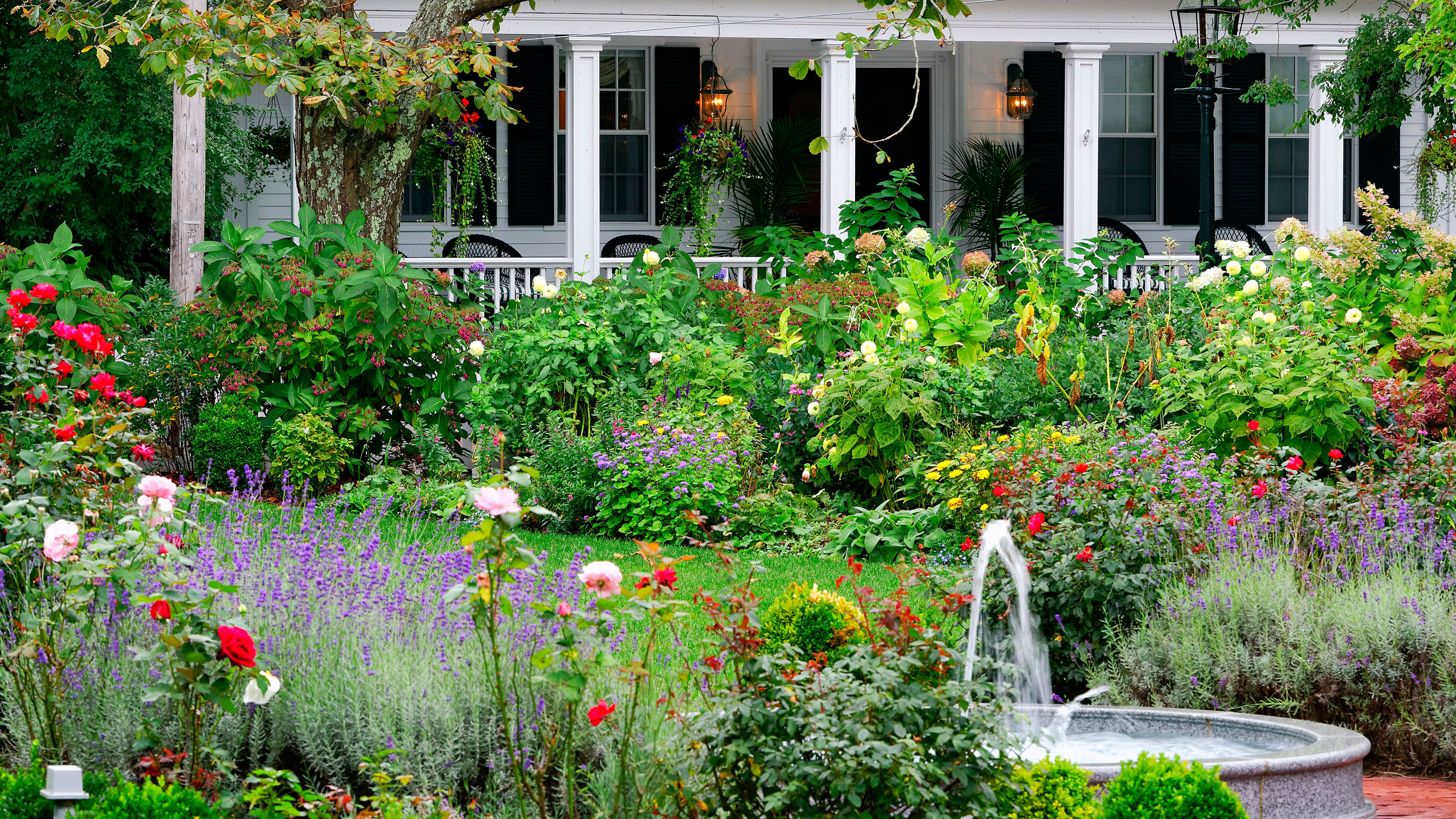

Fragrant plants are one of the important sensory elements that makes a garden special. Just as a border can feel lacking without the mellow hum of bees, so something seems missing without fragrance.
In late spring, it might come from lilac or lily of the valley, and in summer, it could be roses or lavender. Often the smell hits you when passing something in bloom or by getting close to aromatic foliage while working in the borders; but on warm, still days, the stronger perfumes hang in the air, and all you need do to enjoy them is sit back on the patio and inhale.
There are aromatic plants to enjoy in every season: including viburnum and witch hazel in winter; but the vast majority bloom in summer, and spring is a great time to start adding them to your flower bed ideas. A few months later, the garden will be filled with reviving scent.
Fill your garden with gorgeous scent with the best fragrant plants
At Keyneston Mill Scented Gardens in Dorset, home to Parterre Fragrances, the bulk of the borders are composed of fragrant plants, many of which are used to produce the company’s perfumes.
'My favourite scents are the citrusy scented-leaf pelargoniums,' says Head Gardener Rebecca Williams, 'in particular P. graveolens and 'Prince of Orange'. I’m also besotted with the smell of the chamomiles: Chamaemelum nobile and Matricaria recutita. None of these plants are difficult to grow and working amongst them brings great pleasure.'
Keyneston is a great example of a scented garden because it is designed to shield the plants from the wind, which would otherwise carry their aroma away. 'We have a lot of hornbeam hedging, which creates a walled-garden effect that helps to capture the scent, and one part of the garden is sunken, with high slopes, again to contain the fragrance,' says Rebecca.
If you want to recreate a similar scented paradise, here are our top suggestions to plant.
1. Philadelphus ‘Belle Étoile’
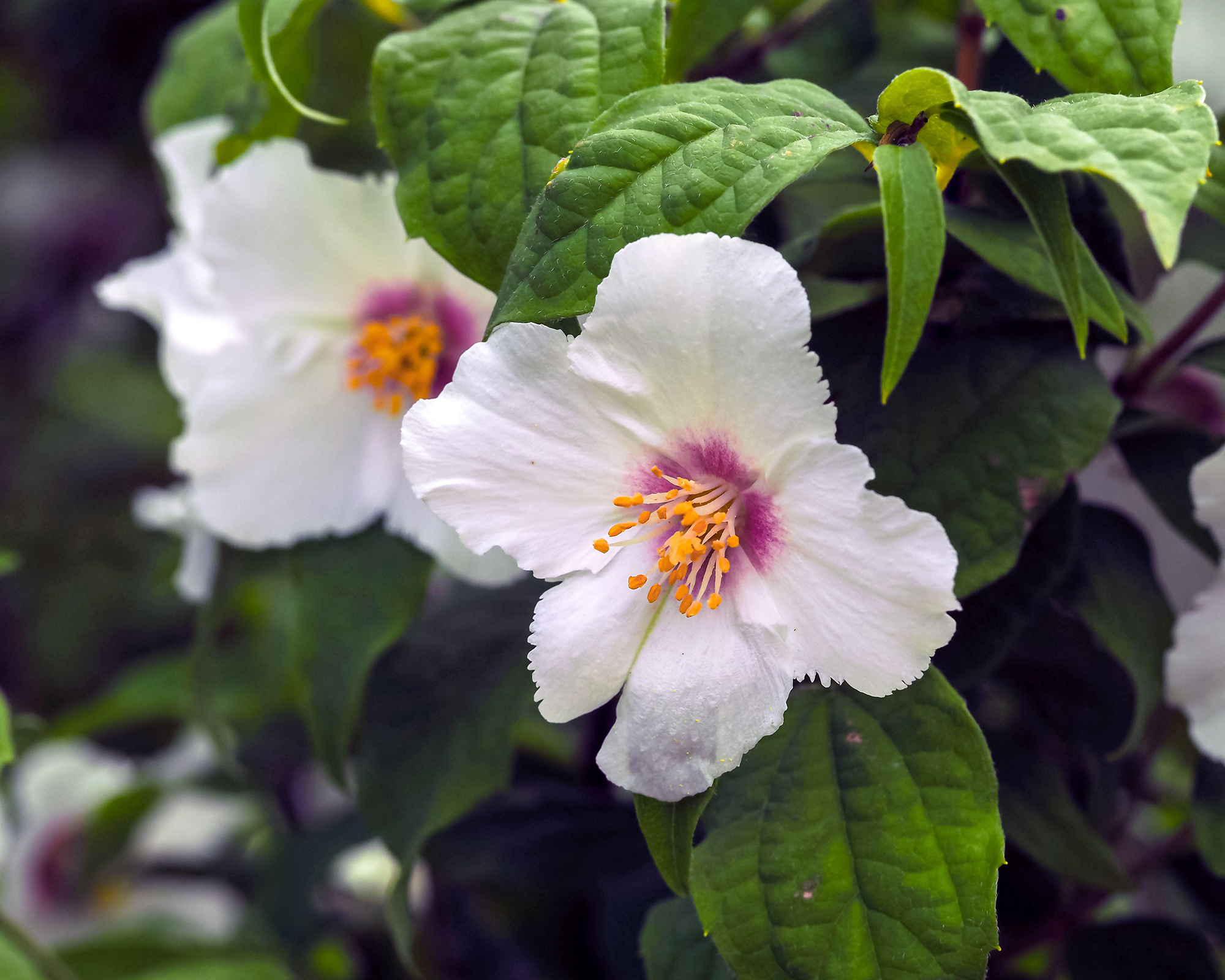
- Hardiness: USDA 5-8 (UK H6)
- Height: 4-6ft (1.2-1.8m)
- Spread: 4-6ft (1.2-1.8m)
You will get a cloud of richly scented single white blooms in early summer with this beautiful shrub. Unlike some mock orange, the smell is not oppressive, but it is strong enough to float on the air.
This shrub is best in well-drained soil in sun. It copes with poor soil, pollution, and coastal sites. Mulch (for example, with compost) in spring, pruning shrubs back immediately after flowering.
Weigela florida 'Foliis Purpureis' will make the perfect planting partner for the mock orange.
2. Euphorbia mellifera
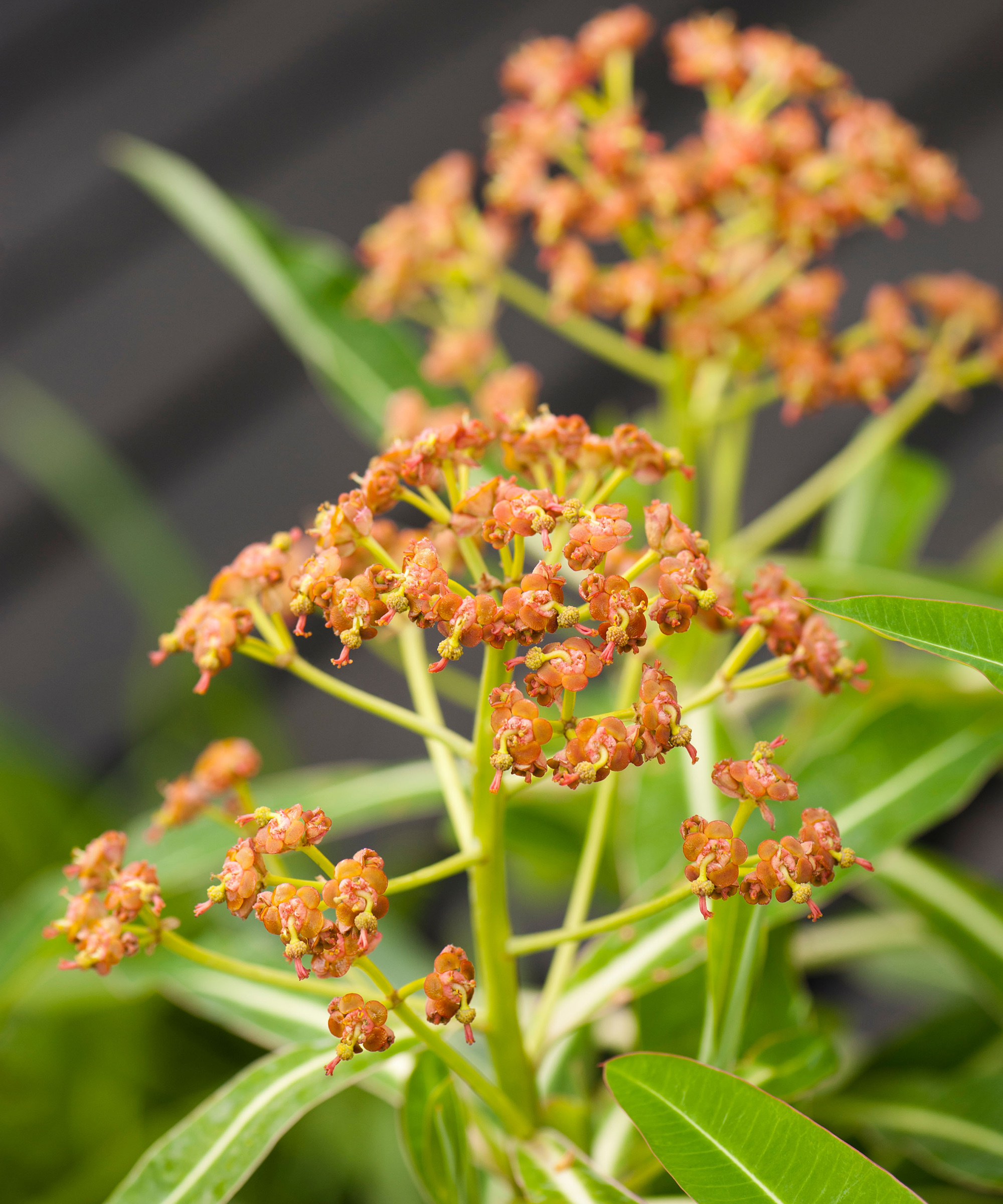
- Hardiness: USDA 9-11 (UK H3)
- Height: 6ft (1.8m)
- Spread: 6ft (1.8m)
The Canary spurge (or honey spurge) is a fantastic dome-shaped tender evergreen shrub. You'll see honey-scented bronze flowers start to appear on this low maintenance shrub in late spring.
You can grow euphorbia in well-drained soil in sun. But it's also a shade loving plant which will work well in low light areas of the garden. In cold areas, grow against a sheltered south or west-facing wall. Wear gloves to prune as the sap is a skin and eye irritant.
Plant in a border with Buddleja lindleyana for beautiful, contrasting shaped blooms.
3. Cistus ladanifer
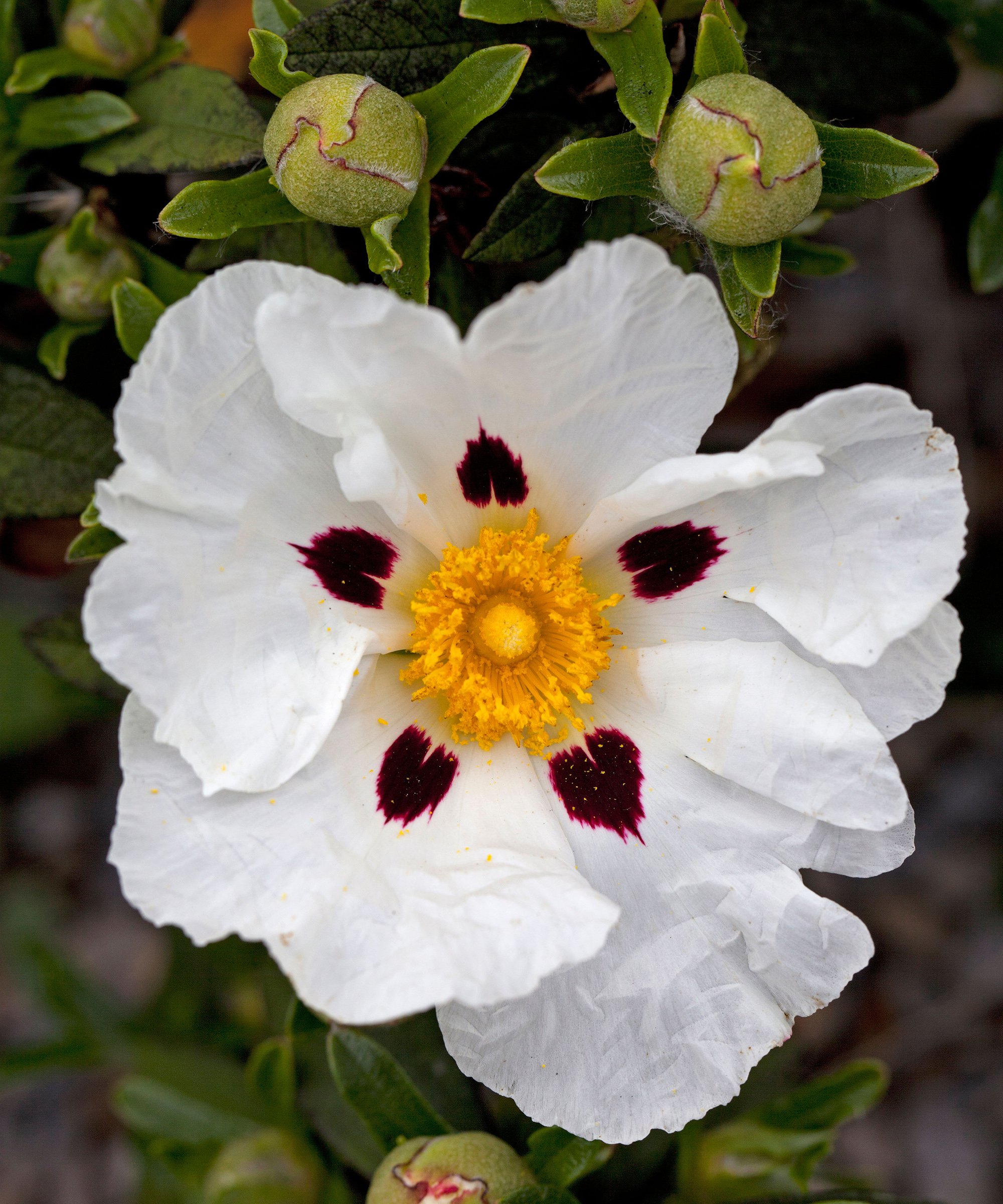
- Hardiness: USDA 6-9 (UK H4)
- Height: 5ft (1.5m)
- Spread: 5ft (1.5m)
On hot days, when the evergreen leaves of this shrub release their balsam scent, you realise why perfumers use it (they call it labdanum). It also has white flowers in summer.
Plant this rock rose in very well-drained, sun-baked soil in a sheltered position. It copes with poor soil and there's no need to protect it from slugs, who give it a wide berth.
A great companion for the rock rose will be a Phlomis italica.
4. Rosa ‘Madame Boll’
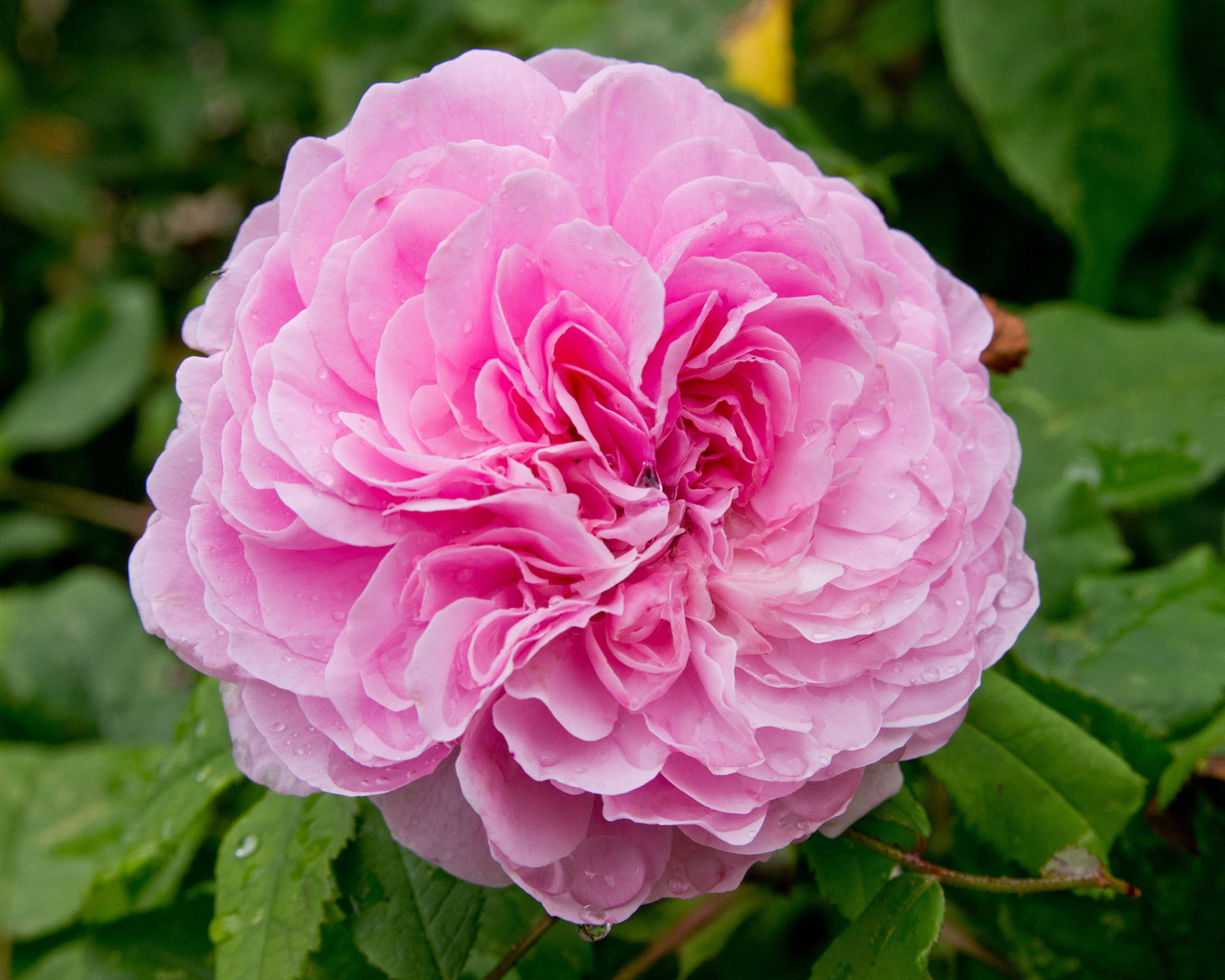
- Hardiness: USDA 5-9 (UK H7)
- Height: 3ft (90cm)
- Spread: 2ft (60cm)
Rosa ‘Madame Boll’ (also known as ‘Comte de Chambord’) has buxom lilac-pink blooms. It's a healthy repeat-flowering Portland rose, which dates back to 1863, and it will fill the summer air with beautiful scent.
These types of roses like fertile humus-rich well-drained, retentive soil in sun. Dig in organic matter (such as well-rotted manure) before planting. Prune and mulch in late winter or early spring.
Digitalis purpurea ‘Sutton’s Apricot’ is another sun lover which will complement this repeat-flowering rose.
5. Rosa 'Munstead Wood'
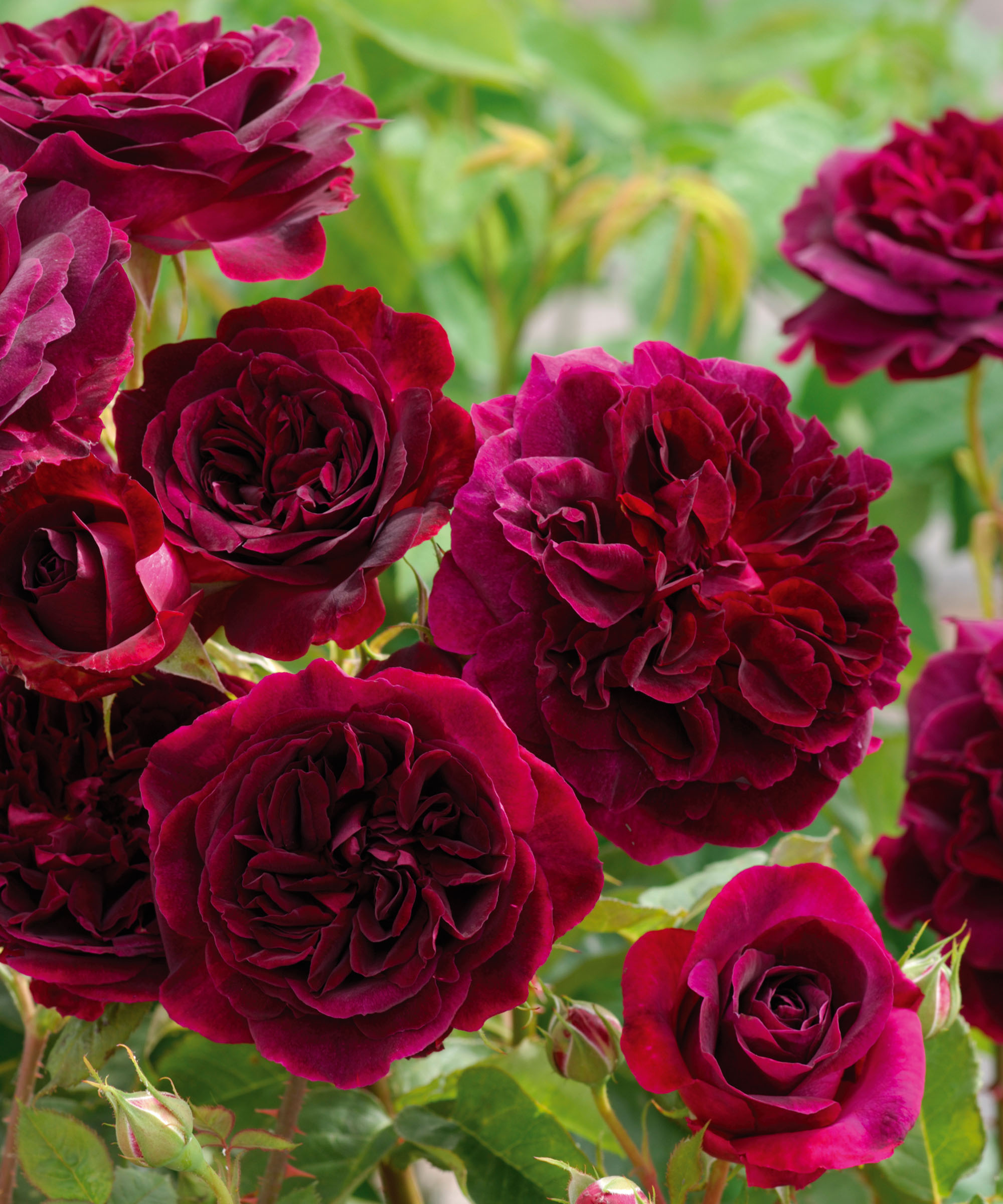
- Hardiness: USDA 5-9 (UK H6)
- Height: 3.5ft (1.1m)
- Spread: 3.5ft (1.1m)
This is one of the best fragrant plants for scent and intense color. The velvety port-wine flowers, which smell strongly of blackberry and damson, are produced by this repeat-flowering David Austin shrub rose throughout summer.
Roses like fertile humus-rich well-drained, retentive soil in sun. Dig in organic matter (such as well-rotted manure) before planting. Prune and mulch in late winter or early spring.
Grow salvias like the S. nemorosa ‘Caradonna Pink Inspiration’ with this rose. It's a hardworking plant which will make a great planting partner.
6. Nepeta ‘Six Hills Giant’
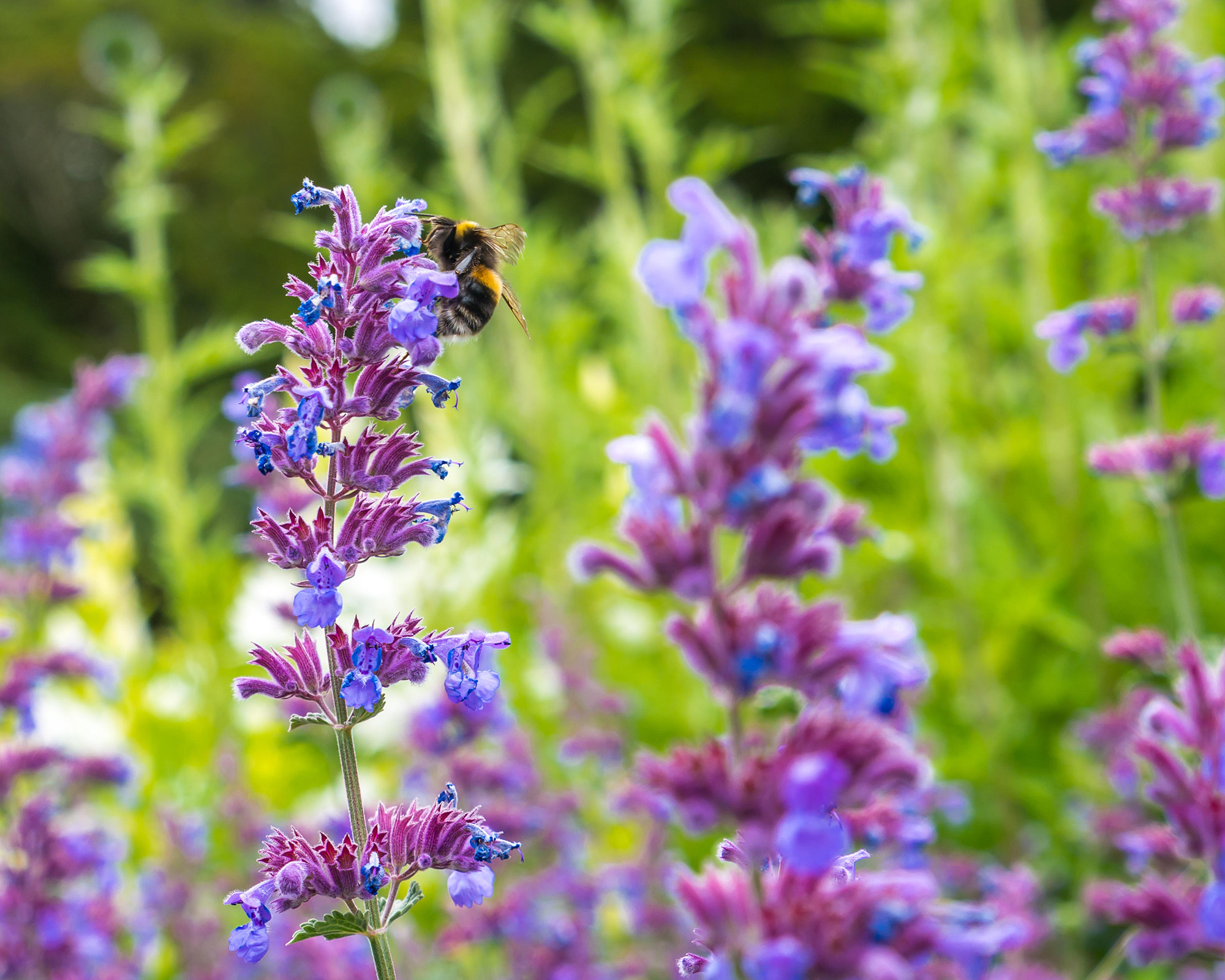
- Hardiness: USDA 4-7 (UK H7)
- Height: 3ft (90cm)
- Spread: 2ft (60cm)
This excellent border plant is a hazy mass of lilac-blue flowers that hums with happy bees for weeks in summer. It is a relaible grower making it one of the best plants for beginners to grow. The grey-green foliage fills the air with a caramel scent.
This perennial likes well-drained soil in sun or semi-shade. Provide support for it to grow through, otherwise it flops. Cut back after the first flush of flowers to stimulate more blooms.
Knautia macedonica is a flowering perennial which will create a meadow effect alongside Nepeta.
7. Lavandula x intermedia ‘Sussex’
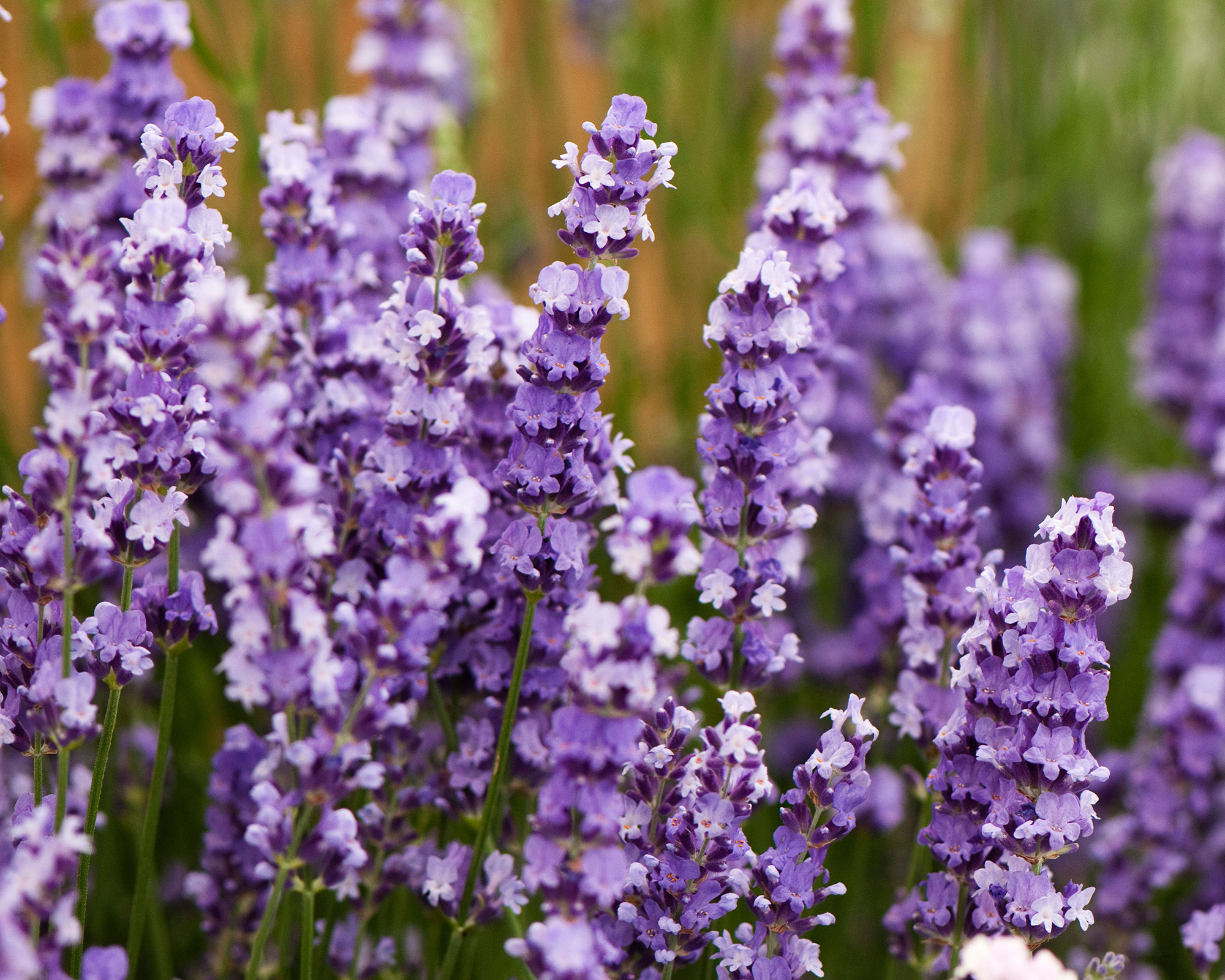
- Hardiness: USDA 5-8 (UK H5)
- Height: 2.5ft (75cm)
- Spread: 3ft (90cm)
A great choice to use for planting a lavender hedge for legs to brush past, releasing the scent of the silver-green foliage. Bees adore the tall pale-purple flowers.
Lavender likes very well-drained neutral to alkaline soil in full sun and tolerates poor soil. Prune lavender after flowering (never cutting beyond green growth) and give a light trim in spring.
8. Dianthus ‘Devon Wizard’
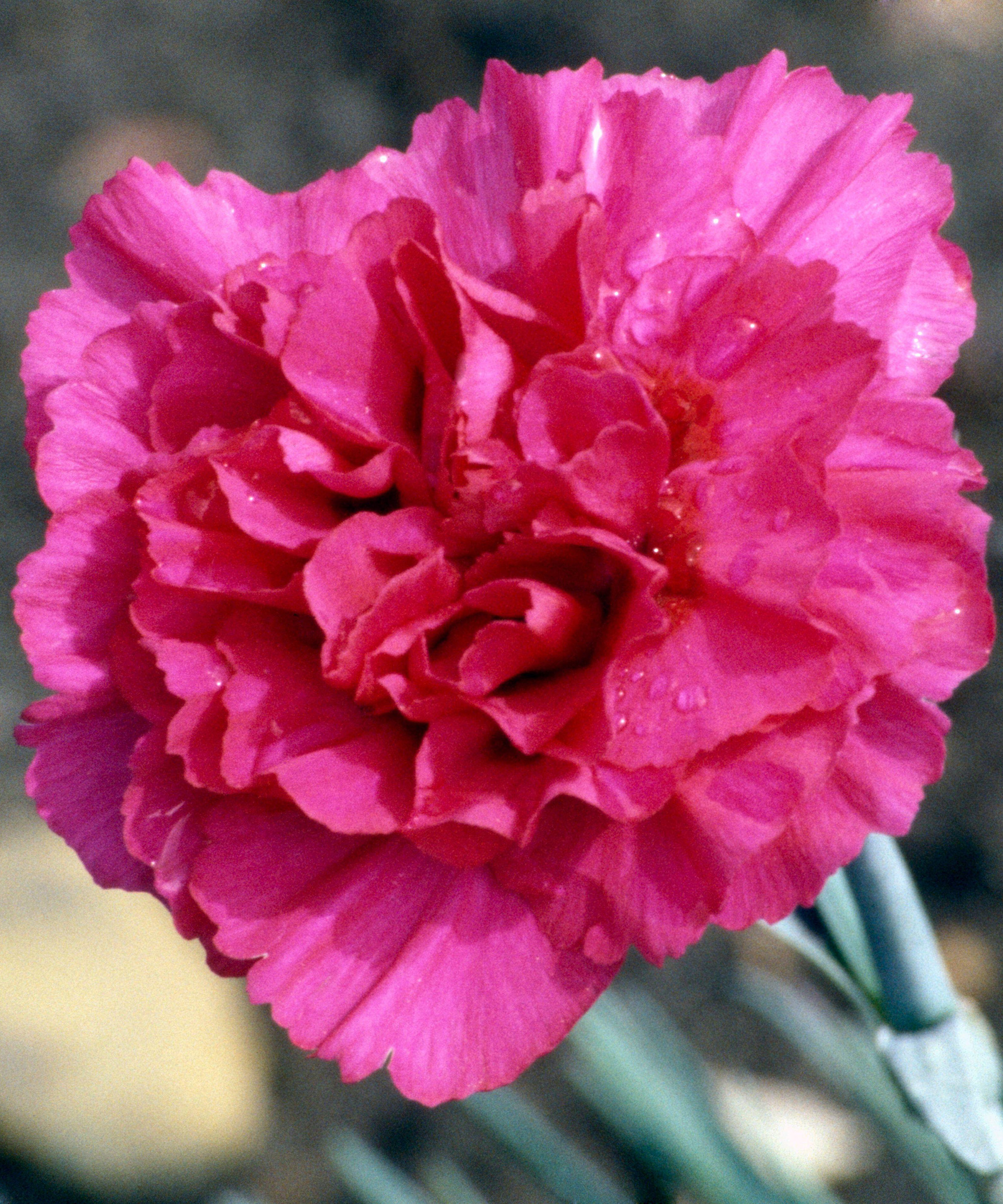
- Hardiness: USDA 4-8 (UK H6)
- Height: 10in (25cm)
- Spread: 20in (50cm)
Bold magenta-pink double flowers that exude a delicious, spicy clove scent are produced above blue-green foliage, from mid summer to early fall.
Pinks like very well-drained neutral to alkaline soil in sun. For best results, fork in organic matter before planting. Deadheading flowers will prolong flowering, and you can make new plants via cuttings every few years.
For a stunning effect, learn how to grow ornamental grasses like Festuca glauca ‘Blaufuchs’ alongside Dianthus.
9. Helichrysum italicum
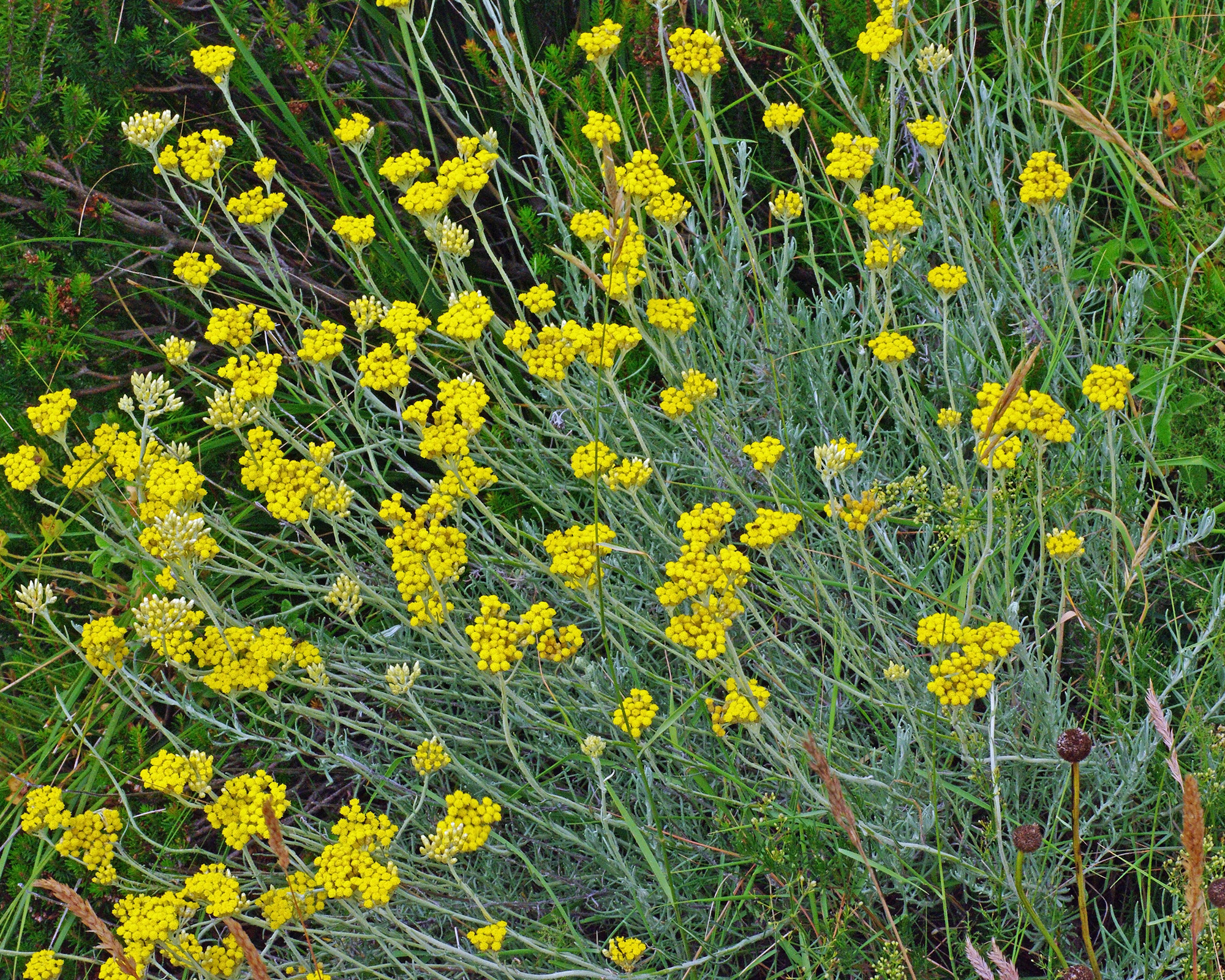
- Hardiness: USDA 7-10 (UK H4)
- Height: 2ft (60cm)
- Spread: 3ft (90cm)
The spicy Mediterranean scent of this sub-shrub’s ever-grey foliage carries on the air on hot, sunny days. The foliage is paired with yellow flowers from midsummer to early fall.
The curry plant likes very well-drained, light neutral to alkaline soil in sheltered sun, but it will also tolerates poor soil. Mulch (for example, with straw) in winter in cold areas and give it a trim in spring.
To offset the yellow flowers of Helichrysum italicum, plant Origanum ‘Rosenkuppel’ alongside it. It's a non edible herb from the oregano family with stunning purple hues that will create an effective contrast.
10. Lilium ‘Casa Blanca’
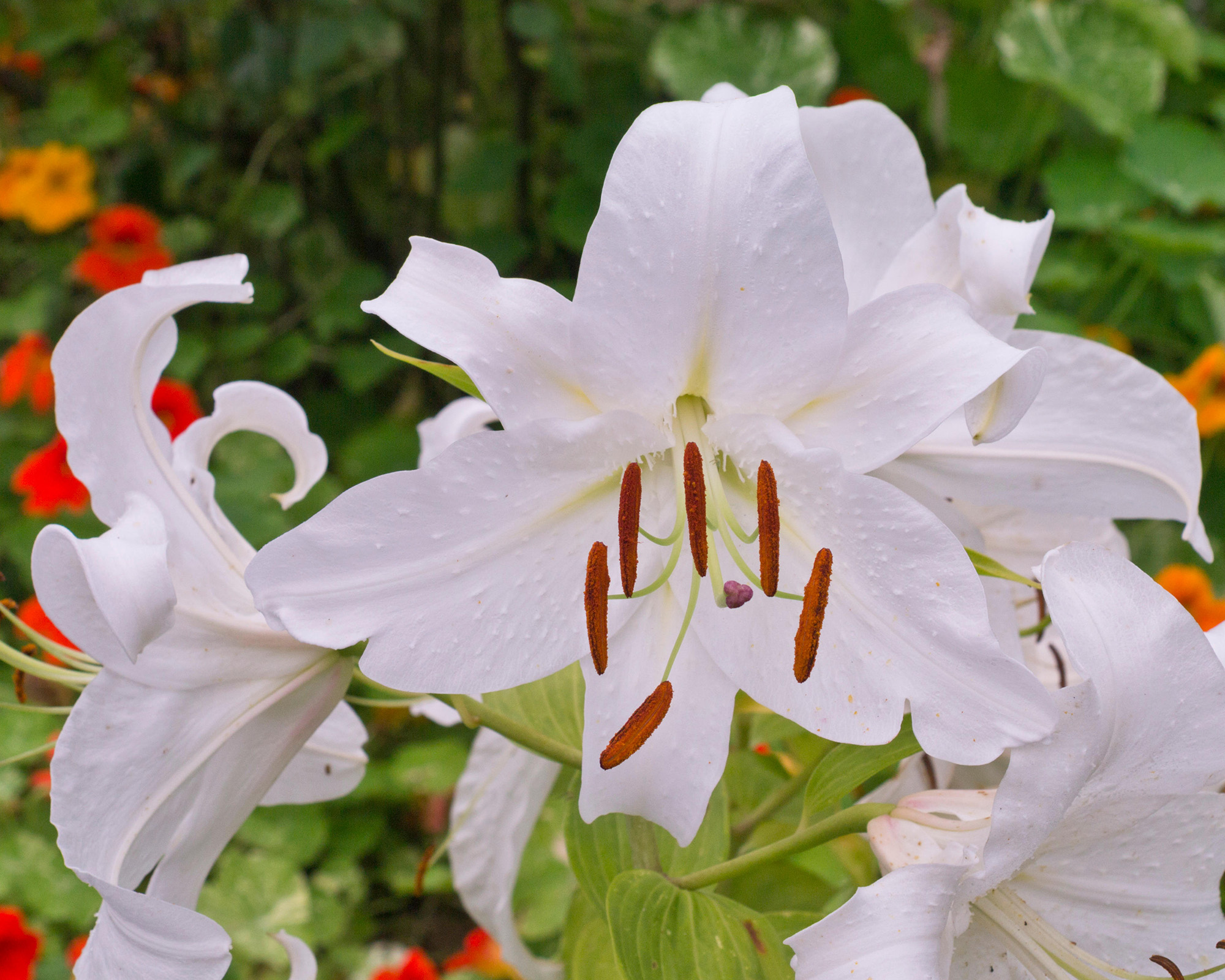
- Hardiness: USDA 4-9 (UK H6)
- Height: 3.2ft (1m)
- Spread: 8in (20cm)
Giant elegant white trumpet flowers atop tall stems, release a strong, heady vanilla scent, especially at dusk and at night.
You can grow lilies in big, well-drained garden planters, in a mix of compost and grit, allowing 2in (5cm) between bulbs, and planting 8in (20cm) deep. Give tomato food fortnightly in summer.
Do bear in mind, that lilies are one of the plants that are poisonous to cats.
11. Pelargonium ‘Royal Oak’
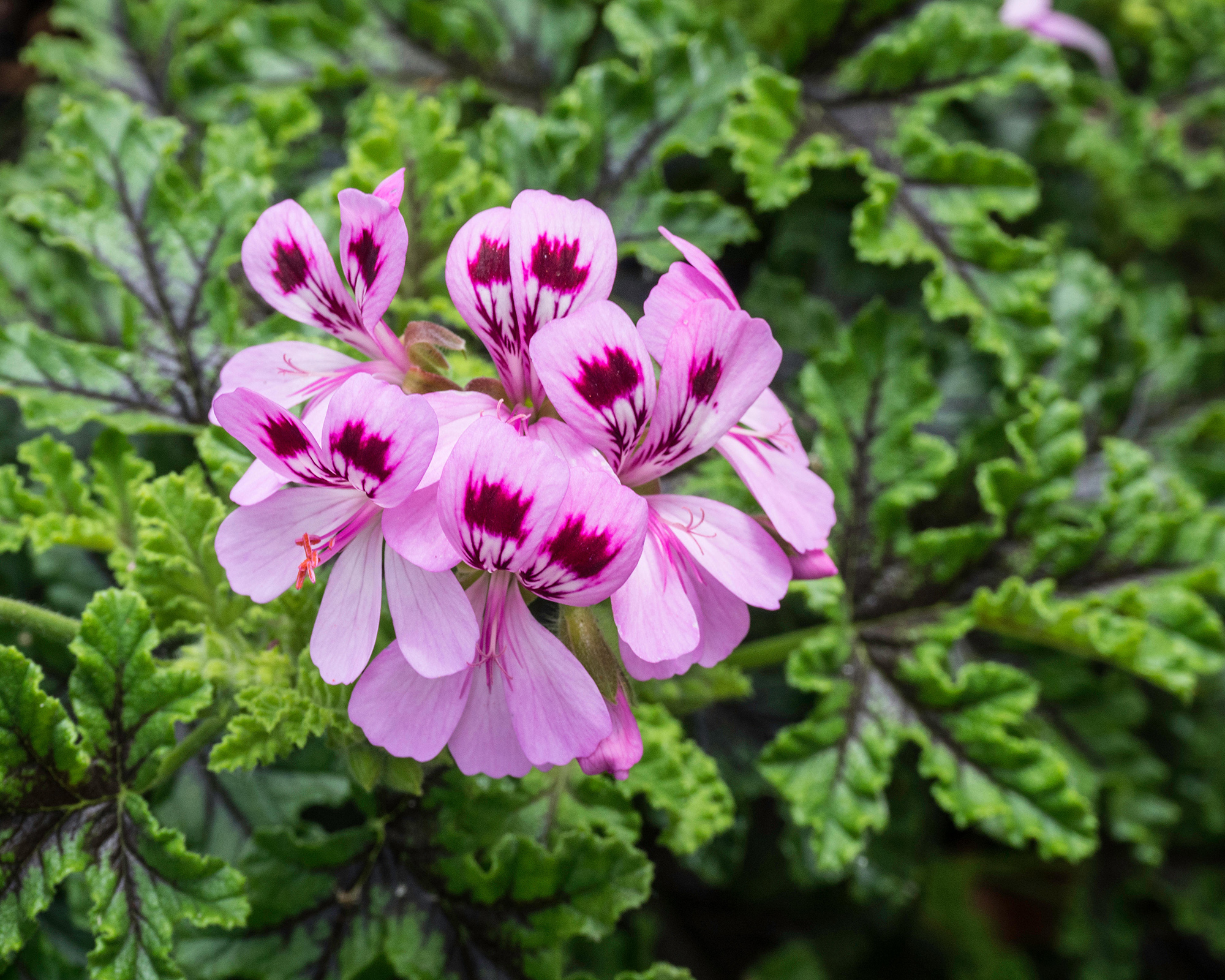
- Hardiness: USDA 10-11 (UK H1C)
- Height: 15in (40cm)
- Spread: 15in (40cm)
The oak-leaf scented pelargonium has small mauve summer flowers, and in sun, its leaves release a wonderful balsam smell reminiscent of a Moroccan souk.
In cold climates, scented pelargoniums are fantastic in well-drained pots on a sunny patio during summer, and overwintered in a frost-free greenhouse. Deadhead regularly to keep the flowers coming.
Pair this Pelargonium variety with Pelargonium ‘Lord Bute’.
12. Rosa ‘De Resht’ (syn. ‘Rose de Rescht’)
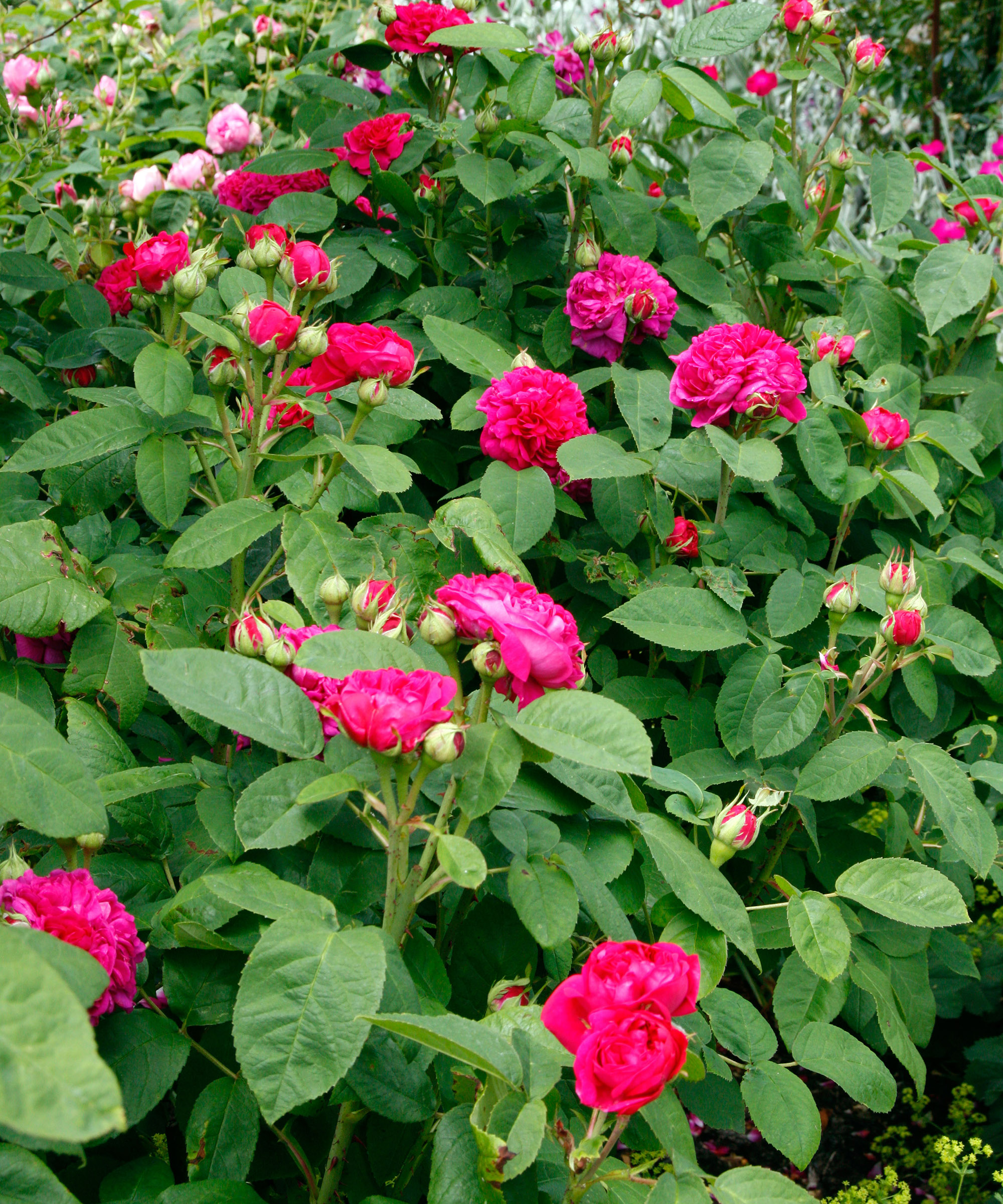
- Hardiness: USDA 4-9 (UK H7)
- Height: 3ft (90cm)
- Spread: 3ft (90cm)
The small double fuchsia-pink pom-pom flowers of this delightful repeat-flowering Portland rose have a lovely perfume and will brighten up any patio gardening ideas.
Plant in a generous, well-drained pot of John Innes No 3 compost, with a dash of well-rotted manure or regular compost added. Place in full sun, and do not let the compost dry out.
Plant with hardy geranium pyrenaicum ‘Bill Wallis’.
13. Clematis x triternata ‘Rubromarginata’
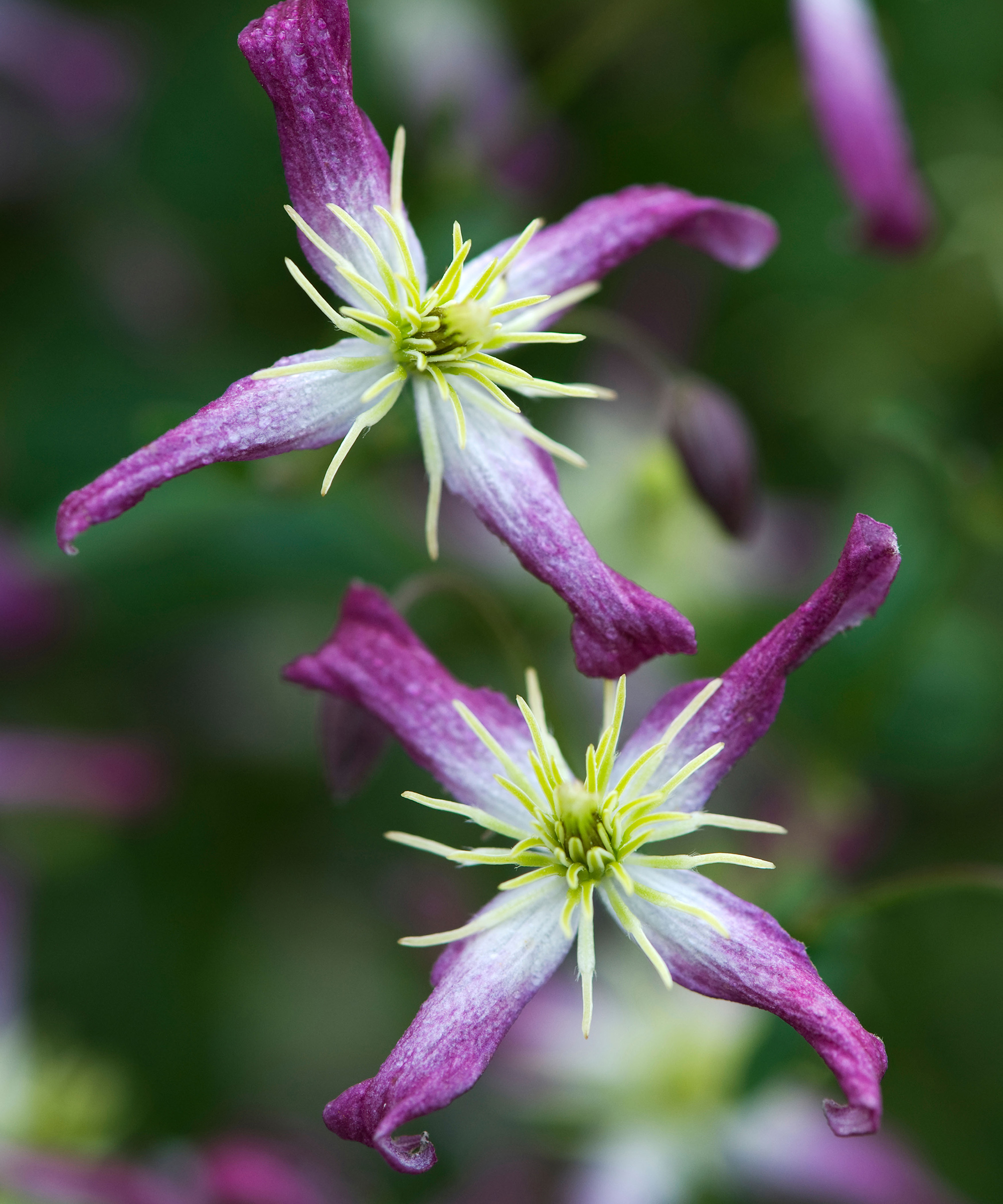
- Hardiness: USDA 5-8 (UK H4)
- Height: 15ft (4.5m)
- Spread: 6ft (1.8m)
No list of fragrant plants would be complete without a clematis, and this vigorous clematis produces a mass of starry white and red-purple flowers that fill the air with a wonderful almond scent, throughout the summer months.
The best way to grow clematis is to let it weave along a garden fence or up trellis in well-drained, retentive neutral to alkaline soil in sun or semi-shade. Cut back hard to 6in (15cm) in late winter or early spring.
Rosa Altissimo is our pick for planting alongside.
14. Trachelospermum jasminoides
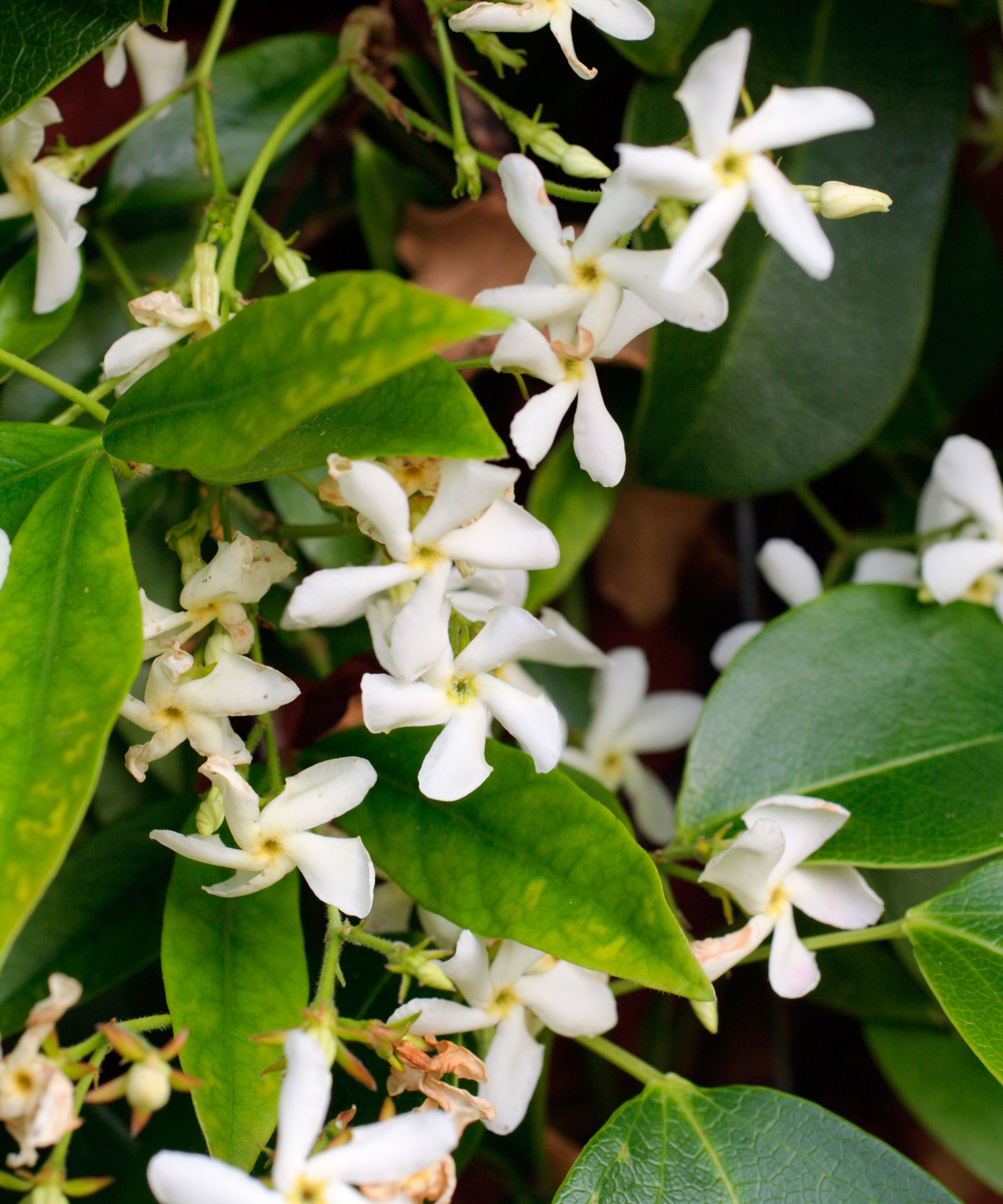
- Hardiness: USDA 8-10 (UK H4)
- Height: 30ft (9m)
- Spread: 20ft (6m)
The star jasmine has jasmine-like ivory summer flowers that release a tea perfume onto the air and glossy green leaves that often take on red winter tints.
In cold areas, grow this evergreen climbing plant up a sheltered, sunny south or west-facing wall, in well-drained, fertile soil. Prune in spring, only if necessary.
Grow jasmine with Rosa ‘Ghislaine de Féligonde’ for a beautiful planting combination.
15. Rosa ‘Climbing Lady Hillingdon’
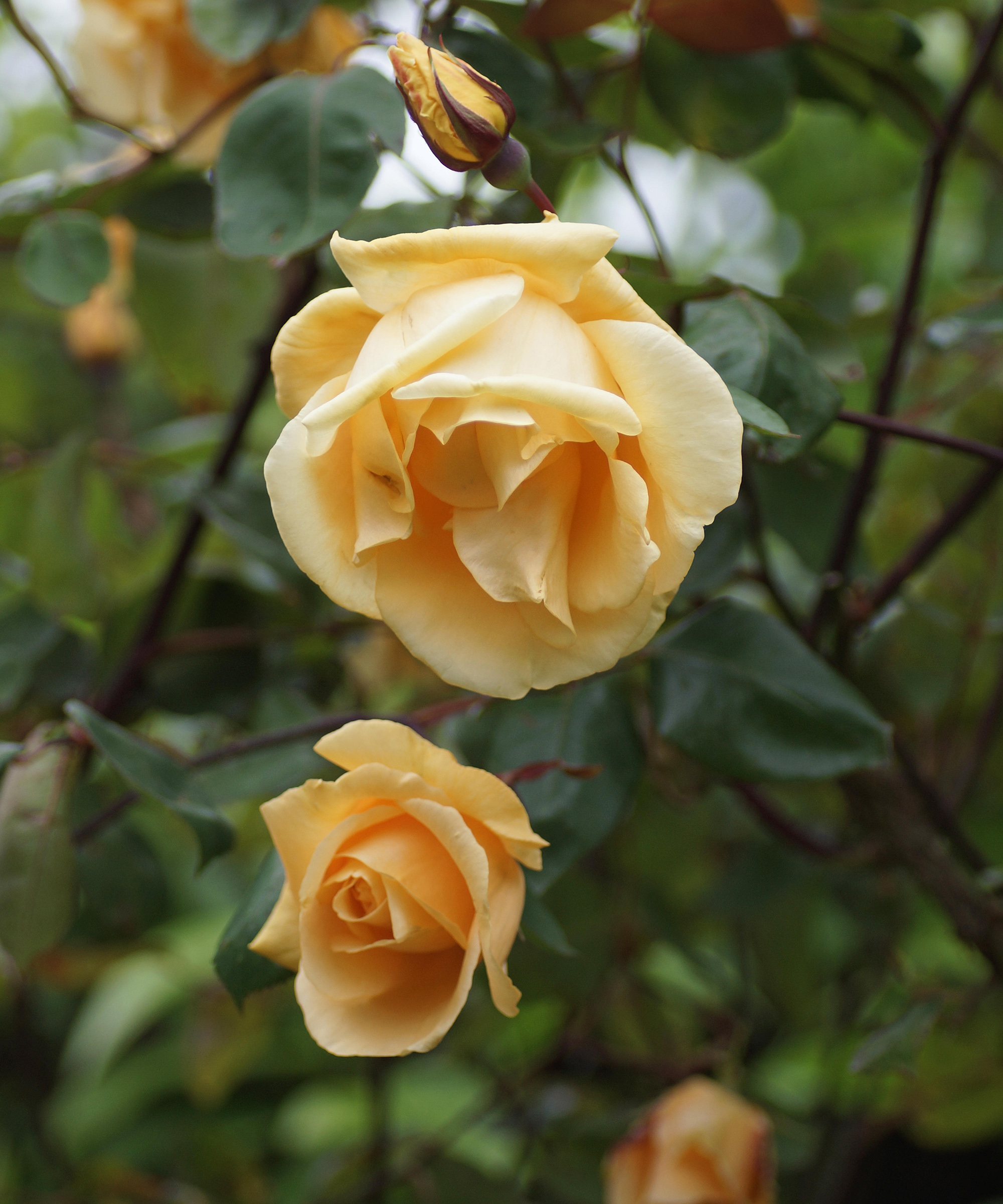
- Hardiness: USDA 5-9 (UK H4)
- Height: 15ft (4.5m)
- Spread: 8ft (2.4m)
If you're a fan of climbing roses, this is a lovely, old repeat-flowering Hybrid Tea with beautifully scented apricot-gold double flowers, healthy wine stems, and dark-green leaves.
Send it up a south or west-facing garden wall or facade, in well-drained, fertile, retentive soil. Tie shoots in fall to prevent wind damage. Prune in winter and mulch in late winter or early spring.
16. Clematis ‘Mayleen’
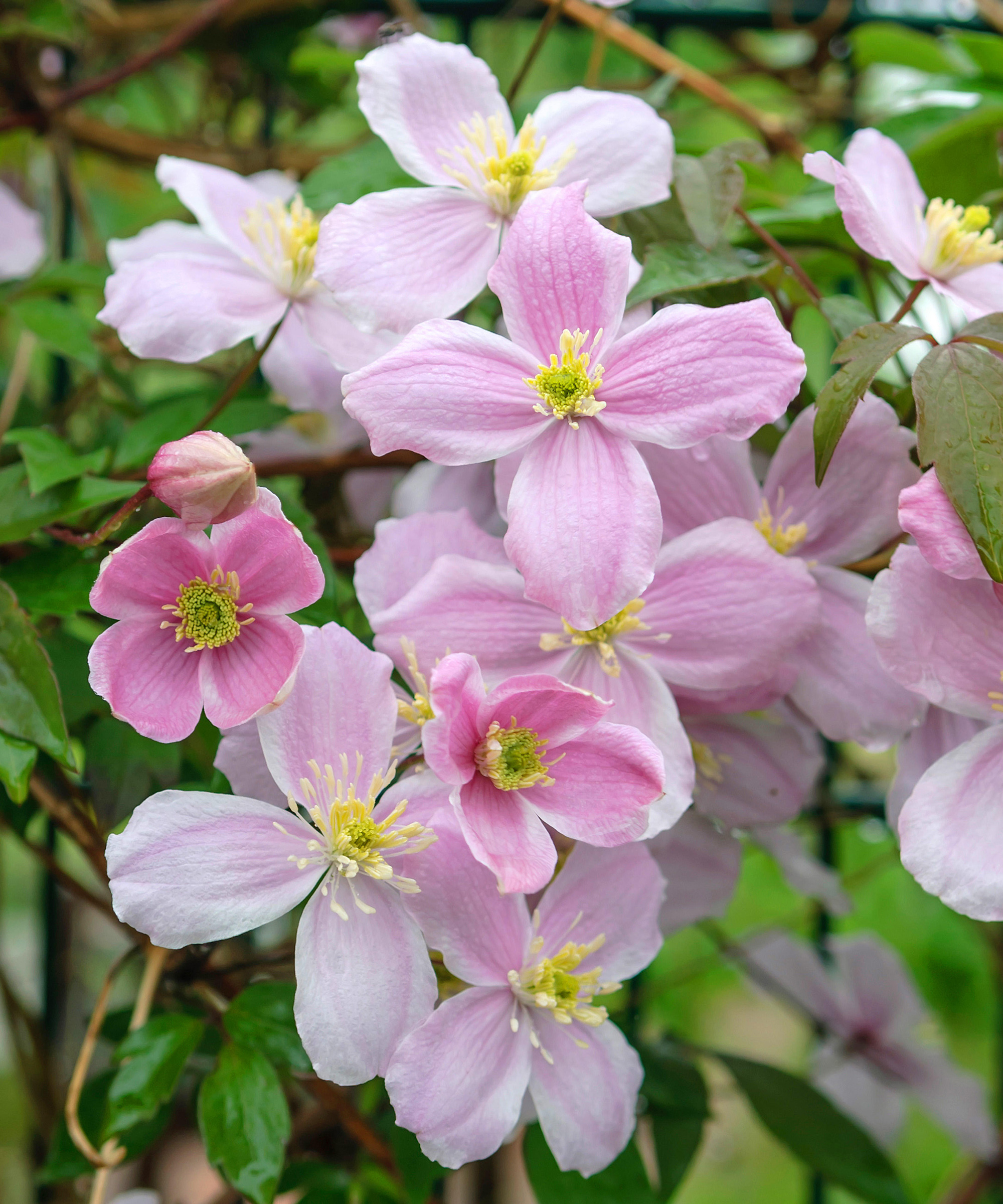
- Hardiness: USDA 4-9 (UK H4)
- Height: 20ft (6m)
- Spread: 20ft (6m)
The mountain clematis is a top choice for perfume and a must-have cottage garden plant. Bronze foliage and charming pink blooms fill the air with vanilla-clove scent in spring. They will look beautiful alongside Fagus sylvatica or entwined with one of the best climbing roses.
Let this vigorous deciduous climber romp over a shed or along a fence, in well-drained soil in sun (with the base of the plant in the shade of shrubs). Prune after flowering.
How do you make the most of fragrant plants?
- Shelter: Wind carries scent away, so it’s important to give fragrant plants containment via shrubs, trees, hedging, or trellis that divides the garden into ‘rooms’.
- Sun: Many plants release their perfume at best in the warmth of sunshine, so place them in full sun or on south or west-facing walls.
- Site: Grow fragrant plants in places you regularly pass (such as the front door) or sit (such as a patio). They can also be grown near to windows, allowing the fragrance to float into the house on summer days.
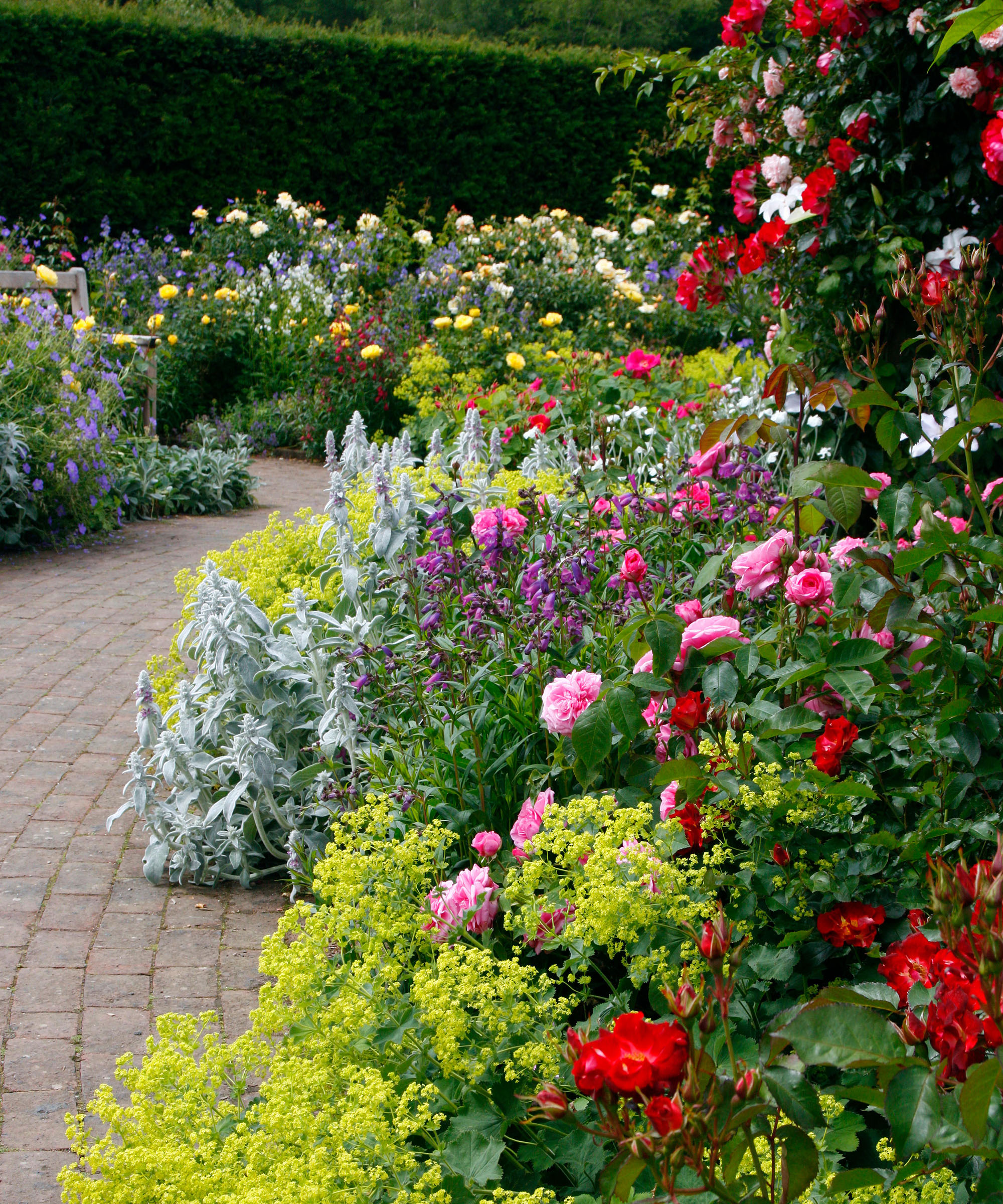
What are the best roses for scent?
Of the older roses, the Damasks (such as ‘Jacques Cartier’) and Gallicas (such as ‘Charles de Mills’) usually have delicious perfumes. Modern breeders often focus on health at the expense of scent, so it’s important to research (or even better, sniff) the perfume power of roses before buying. Some of David Austin’s English roses (including Gertrude Jekyll) have beautiful fragrance.
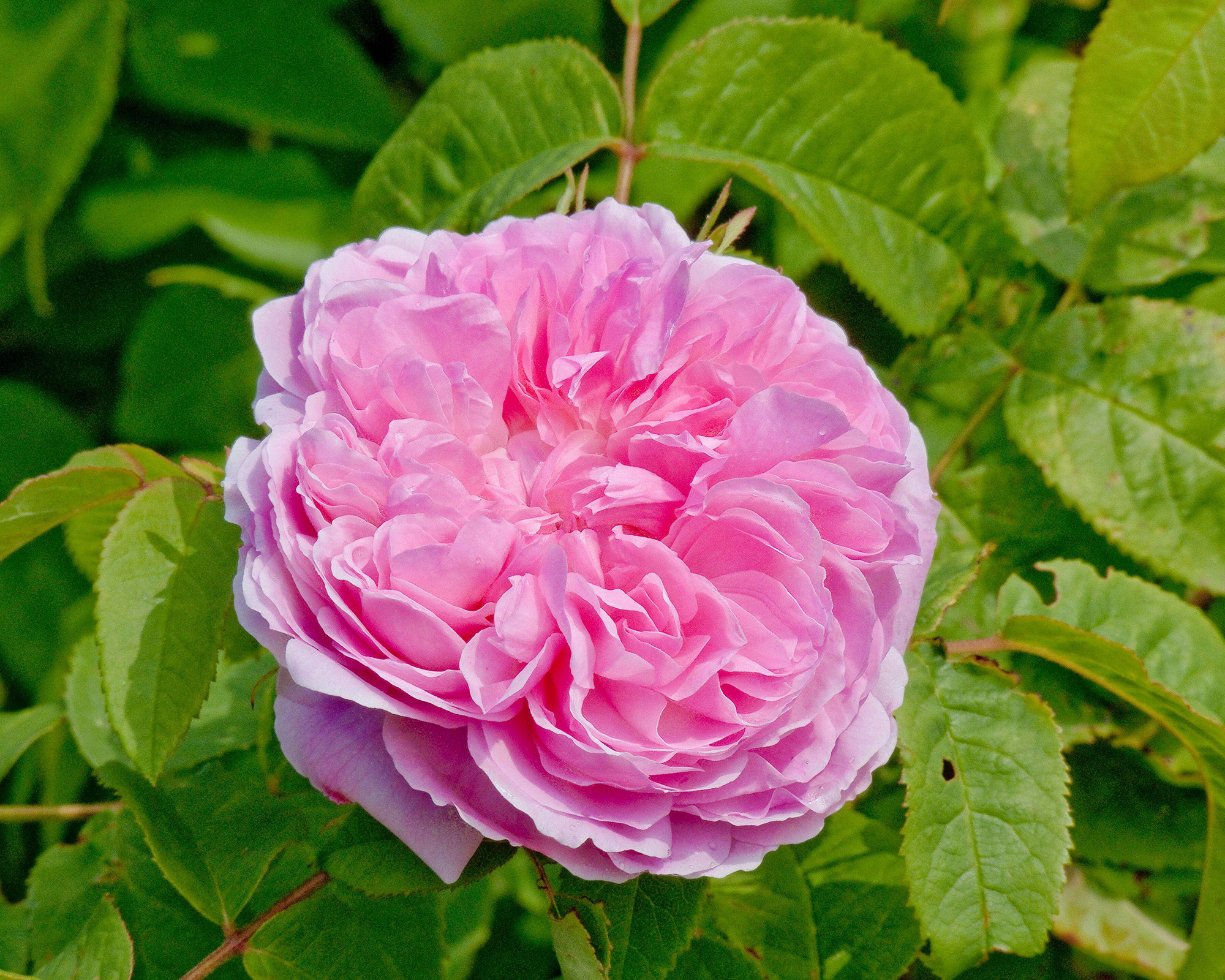
Which fragrant plant has the strongest scent?
Some of the headiest scents in the garden are released at night by Jasmine, lilies, tuberose, honeysuckle, and other white flowers that are best planted near outdoor seating areas used on summer evenings.
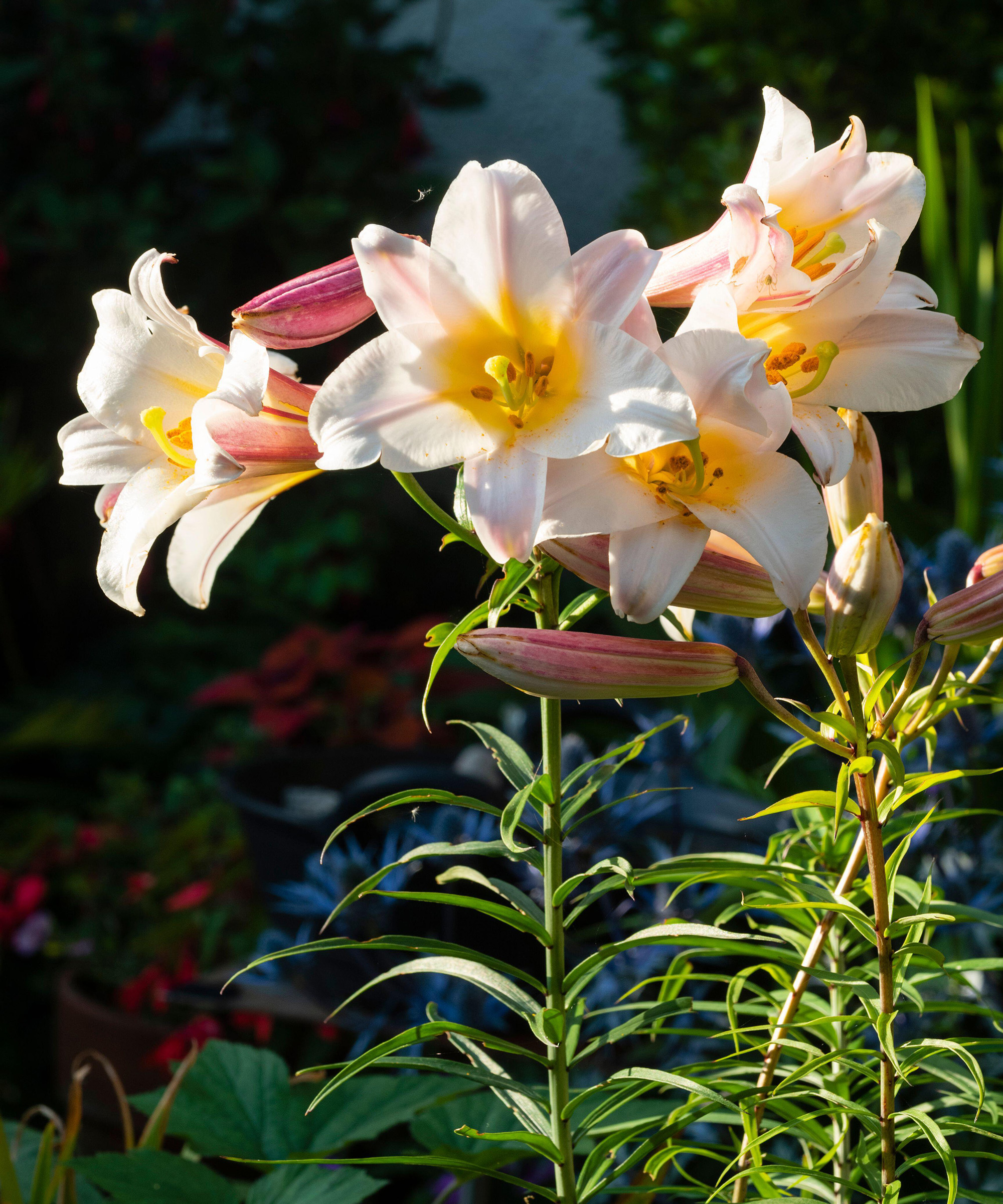
How can I make my garden smell nice?
The best fragrances can be boosted by planting them en masse: for instance, a border of scented roses (mixed with perennials to ensure health) or an informal low hedge of lavender. In sufficient numbers, the gorgeous scents of these fragrant plants will hang on the air throughout summer.

Teresa has worked as an Editor on a number of gardening magazines for three years now. So she is lucky enough to see and write about gardening across all sizes, budgets and abilities. She recently moved into her first home and the garden is a real project! Currently she is relishing planning her own design and planting schemes. What she is most passionate about when it comes to gardening are the positive effects it has on our mental health to grow and care for plants, as well as being great for the environment too and help provide food and shelter for wildlife.
